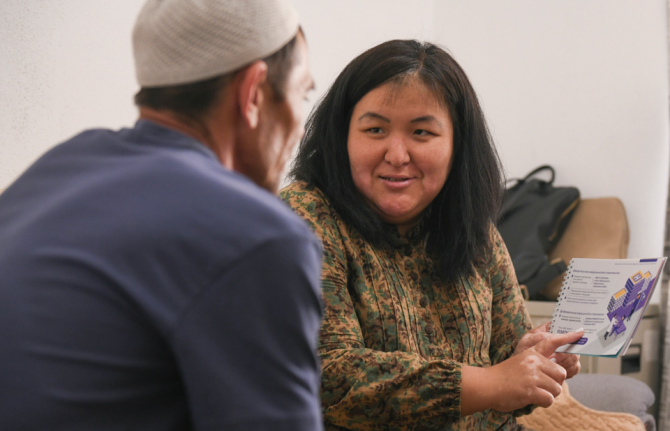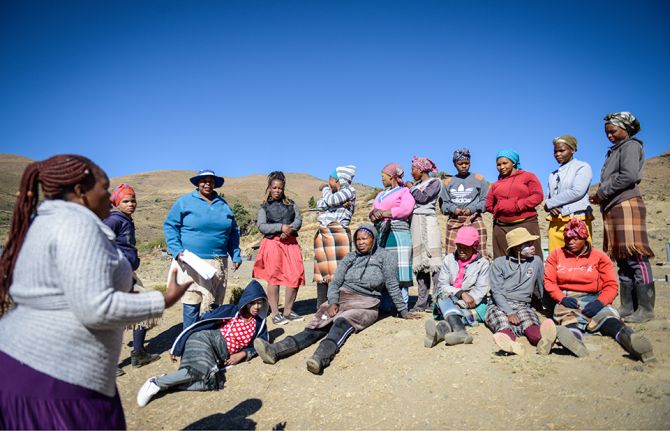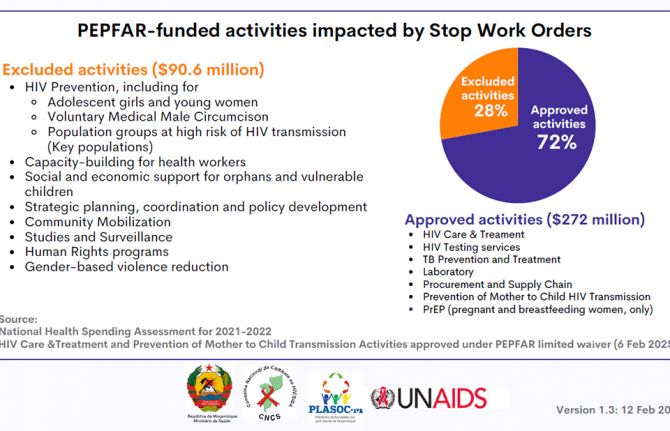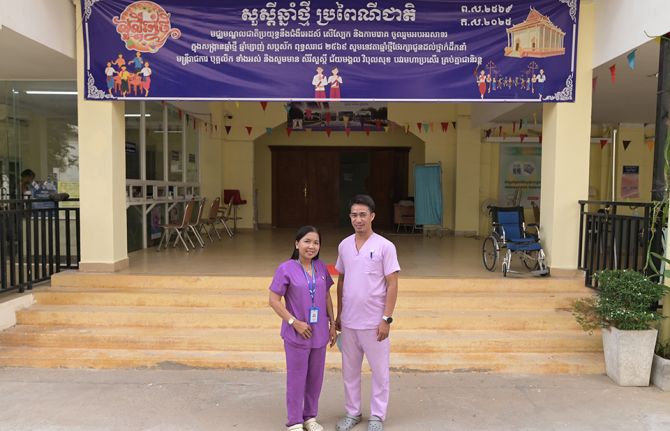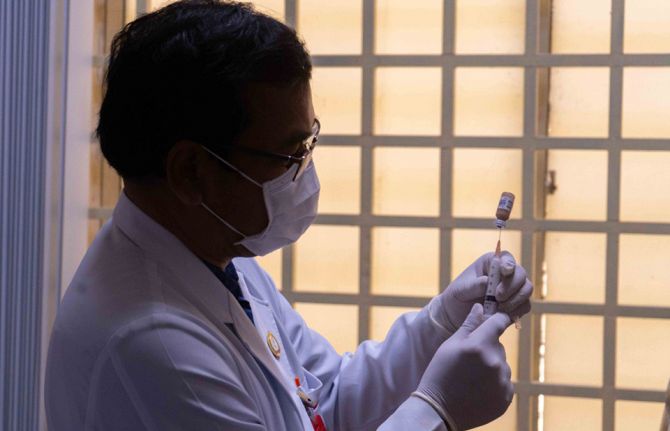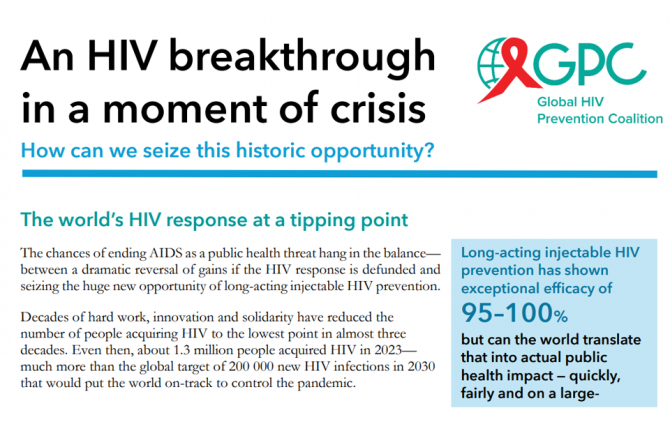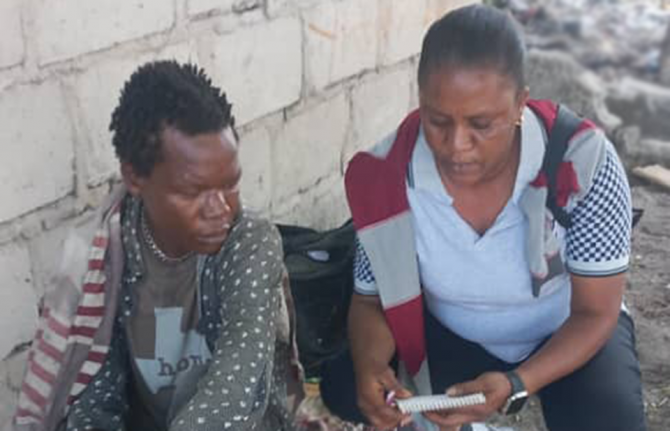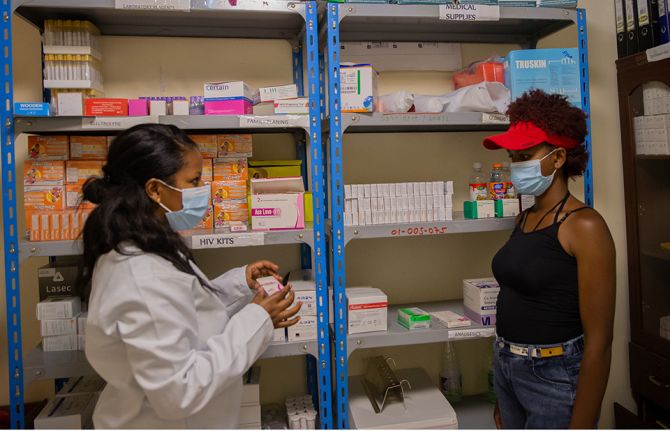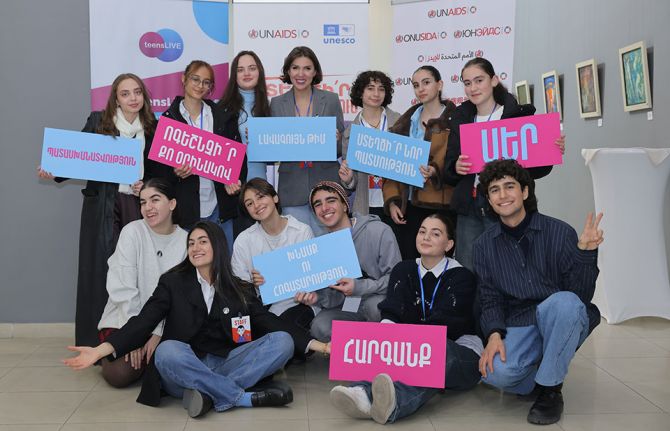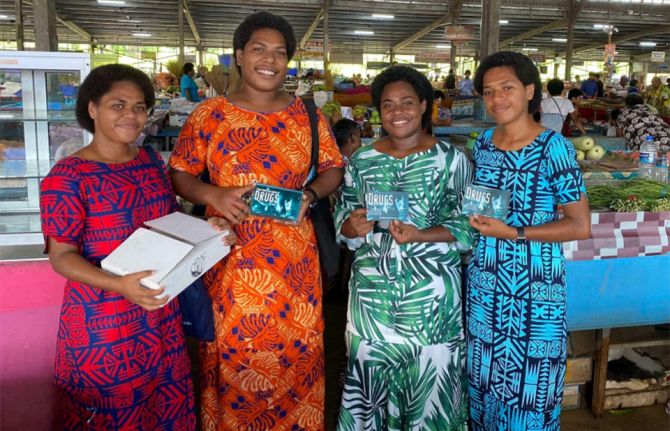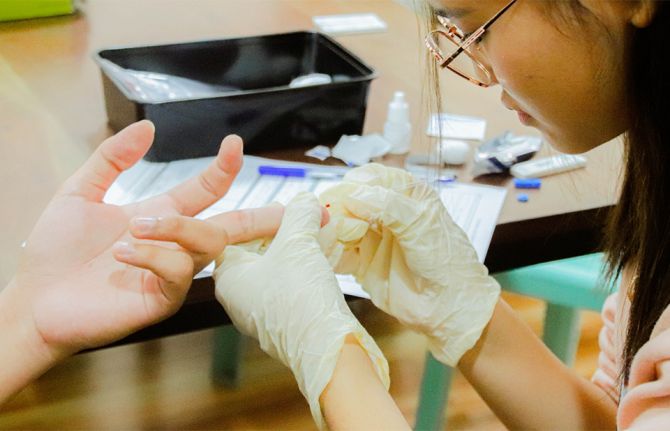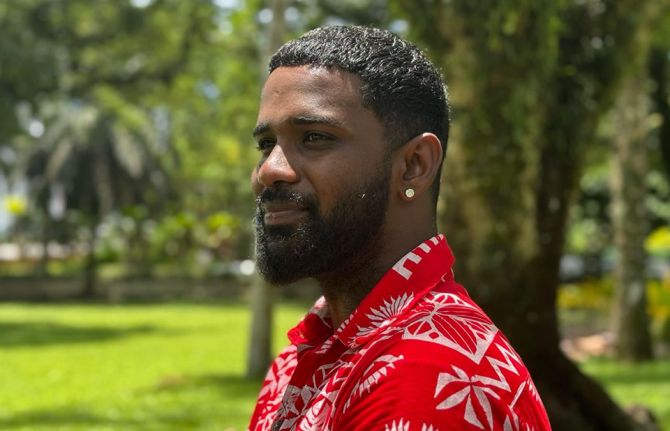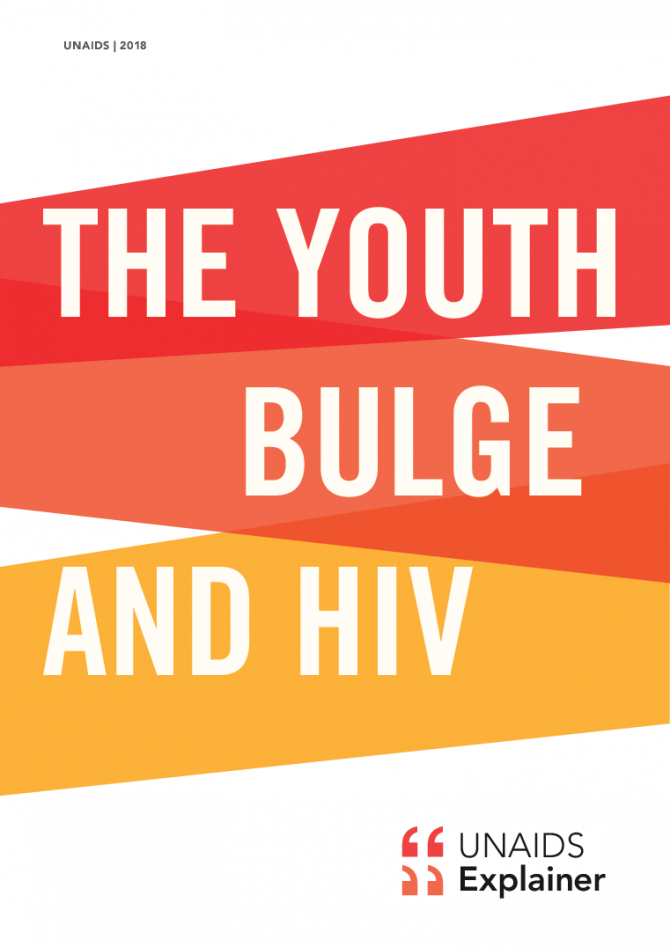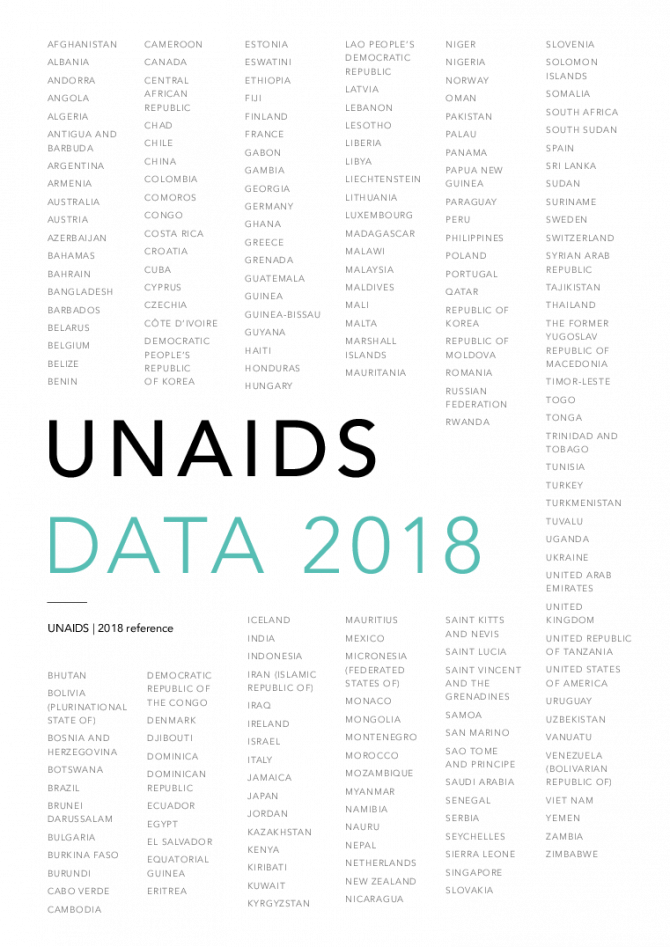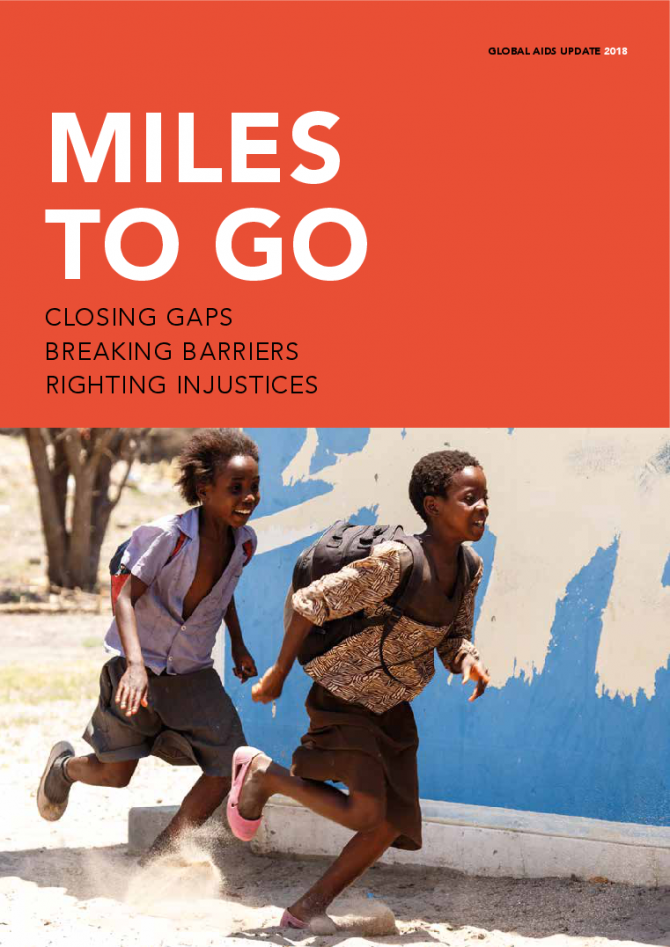
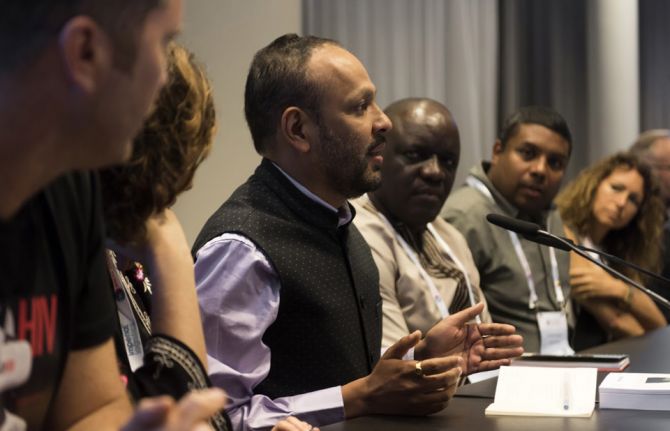
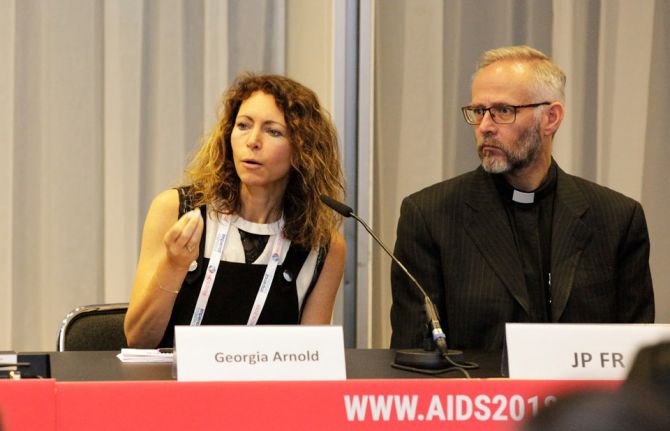
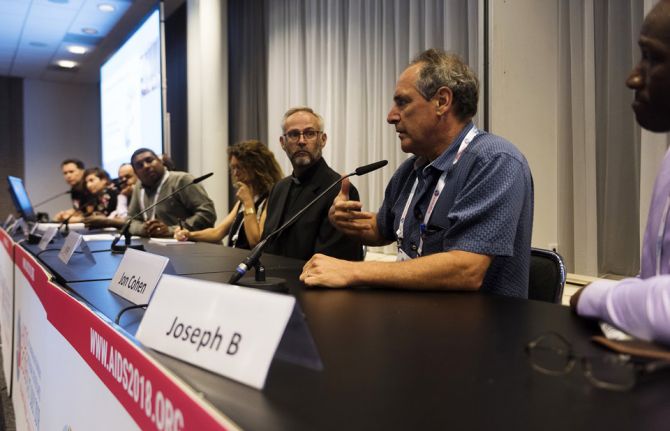
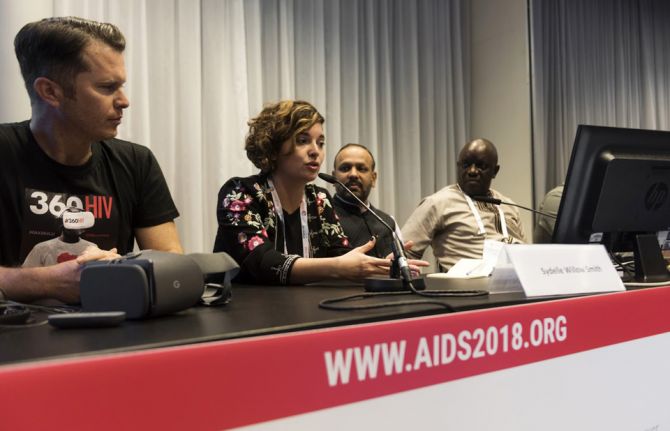
Feature Story
Breaking out of our echo chambers: cutting through the noise with creative storytelling about HIV
24 July 2018
24 July 2018 24 July 2018Analysis of social media use shows that, on the whole, most users tend to engage most with information that aligns to their existing beliefs and perceptions on the world. This phenomenon has been described as the echo chamber effect, whereby users find themselves surrounded, in general, by content from like-minded people and preferred information sources.
Echo chambers can be an opportunity as well as a barrier in the response to HIV. Some online communities offer spaces for people to access and share HIV-related information and resources in a stigma-free manner. On the other hand, echo chambers can also enhance stigmatization, promote discriminatory behaviours or spread inaccurate or false information. To some extent, the echo chamber effect can limit the ability of individuals or organizations to reach people outside of their natural audience bases.
UNAIDS and ViiV Healthcare chaired a symposium on breaking out of such echo chambers at the International AIDS Conference, being held from 23 to 27 July in Amsterdam, Netherlands. The panellists discussed various ways of being heard in a cluttered digital and non-digital space that has radically changed in the past decades.
Science magazine reporter Jon Cohen explained how he uses print, radio, television and Twitter to keep up with the onslaught of news. Despite the non-stop nature of his job, he stressed the importance of quality journalism.
“A medium is a medium and sadly a lot of people do not use the vehicle they have to tell stories well,” he said, likening it to a doctor not using his sharpest tool during an operation. In his opinion, it’s easy to lose readers and viewers, so he advised people to engage as much as possible with their audience and avoid preaching to people.
“Even if I offend people, I describe the reality, because I want you to see it and feel it,” he said.
Georgia Arnold, the Executive Director of the MTV Staying Alive Foundation, explained that the HIV television drama Shuga had had such a successful run for the past nine years because the show focused on teens and spoke to them at their level. It depicts relatable characters that deal with real issues and there is constant youth-based feedback. Recently, MTV introduced a gay character, which she said demanded some adjustment because some countries outlaw homosexuality.
“Use technology to transcend boundaries,” she said, explaining how MTV had to air two versions of the show but uploaded the gay version to YouTube and followed up on Twitter and Instagram. “Flex boundaries, do not smash them,” she advised.
J.P. Mokgethi-Heath couldn’t agree more. He is a policy adviser on HIV and theology for the Church of Sweden and uses his pulpit and sacred texts to reach his audience. “I help people understand texts in a different way,” he said. For him, his style of storytelling in person leads to an immediate response, so he aims to always stay true to his beliefs.
Immediacy and immersion drove Rowan Pybus and Sydelle Willow-Smith to try their hand at virtual reality video-making. The founders of Makhulu Productions based their 3-D short films on young South Africans’ experiences and highlighted one adolescent girl’s journey with HIV, making viewers feel like they are walking into a clinic for an HIV test.
“Virtual reality can have a physical effect on people, and that is a very exciting space to be in,” Mr Pybus said. Ms Willow-Smith added that the fact that Google, UNAIDS, the Desmond Tutu HIV Foundation and the Children’s Radio Foundation all partnered to make the films possible reflects how there is real interest to “break out of individual echo chambers.”
UNAIDS Communications Director Mahesh Mahalingam said that World AIDS Day provides a great opportunity to reach out to people about HIV. Last year, he said, UNAIDS wanted to communicate in a fresh way. The team produced a magazine-like report on the right to health in general, going beyond issues related to HIV. Various communities weighed-in in a series of questions and answers on what the right to health means to them.
“People got to say what they wanted through the UNAIDS mouthpiece, allowing us to break barriers and reach new audiences,” he said.
The symposium ended with ViiV Healthcare and UNAIDS announcing a new digital storytelling challenge prize. “If you feel you engage hard-to-reach groups on issues related to HIV prevention, testing, care and/or stigma, then apply,” said ViiV Healthcare Positive Action’s Jennifer Carpenter. She also recognized the two winners of the Every Footstep Counts video competition, Rogers Simiyu from the Elisabeth Glaser Pediatric AIDS Foundation and Joseph Baguma of THETA-Uganda.

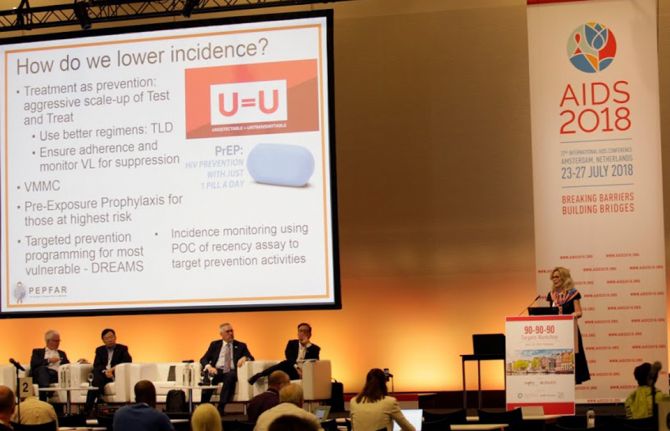
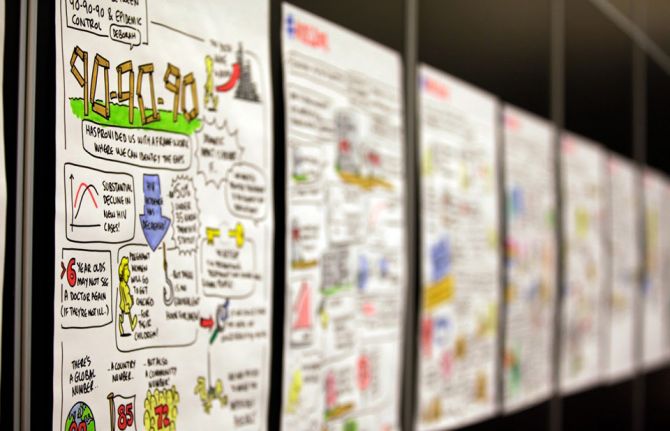

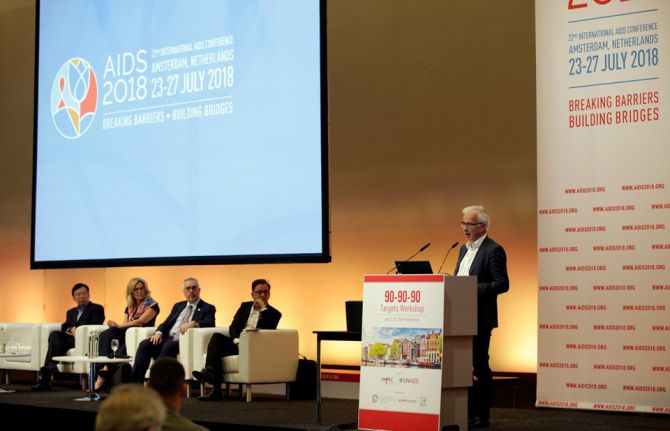
Feature Story
Accelerating towards 90–90–90
24 July 2018
24 July 2018 24 July 2018There has been global progress in accelerating towards the 90–90–90 targets—whereby, by 2020, 90% of people living with HIV will know their HIV status, 90% of people who know their HIV-positive status will be accessing treatment and 90% of people on treatment will have suppressed viral loads—since their launch at the International AIDS Conference in 2014 in Melbourne, Australia.
Four years later, global leaders from civil society, governments, the private sector and academia came together for a two-day workshop, on 21 and 22 July in Amsterdam, Netherlands, to highlight the successes, identify gaps and share best practices in order to reach 90–90–90.
By the end of 2017, the world had achieved 75–79–81. Globally, 75% of people living with HIV know their status, 79% of people living with HIV who know their status are accessing antiretroviral therapy and 81% of people accessing treatment had suppressed viral loads.
The participants at the workshop reviewed the progress made with the rapid adoption of global policies, political commitment, the engagement of civil society and regular evaluation of progress and gaps.
Despite the global successes, evidence presented at the workshop showed that entire regions and populations are still being left behind. Progress in eastern Europe and central Asia, western and central Africa and the Middle East and North Africa is falling behind. Key populations, adolescents and men are not being reached by traditional health facility-based HIV testing services. Lack of political commitment, user fees and stigma and discrimination are some of the barriers to progress.
During the session, the participants discussed ways to identify and correct gaps and direct resources to where they are most needed, including by investing in data collection, reducing the turnaround time from testing to treatment initiation, prioritizing adherence and retention in care, increasing access to affordable viral load testing and the meaningful engagement of civil society in order to reach the people currently being left behind.
The participants also called for the political commitment and financial resources needed to make 90–90–90 a reality everywhere.
Quotes
“It is four years since we launched 90–90–90 and it has taken us further and faster than we could ever have imagined. With 90–90–90, we have built a bridge that spans the essential elements of the HIV treatment cascade. We must not be scared of the future, we must define it. If we quicken the pace, we can reach 30 million with HIV treatment by 2020.”
“Dramatic impact is possible if the core policies are adopted quickly and continuously evolve based on a thorough evaluation of programme needs and gaps. Epidemics evolve and we must rapidly evolve our responses, using the best science and new tools and constantly evaluating why something is not working and adjusting our programmes appropriately.”
“It is important to recognize the catalytic nature of the 90–90–90 targets and leverage successes to quicken the pace in all regions and reach all populations.”
“The most sustainable investment you can make is in communities. It is the most difficult form of investment, but the most valuable way to sustain the response!”
Related

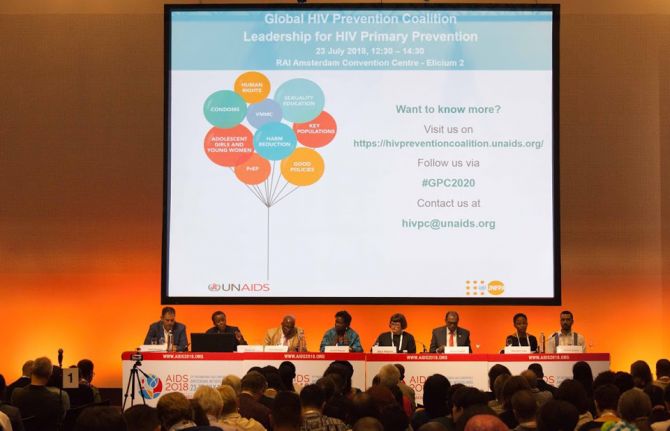
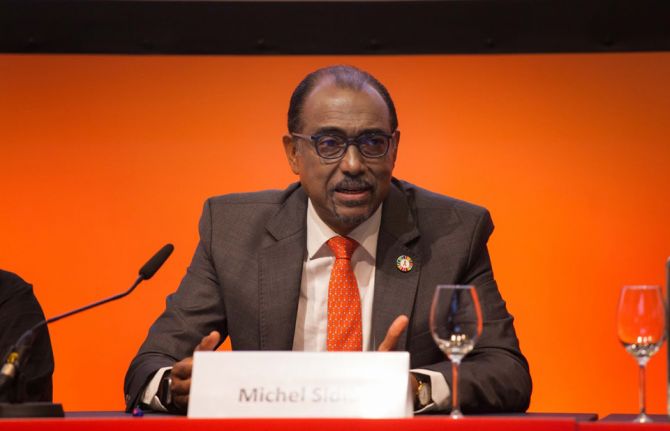
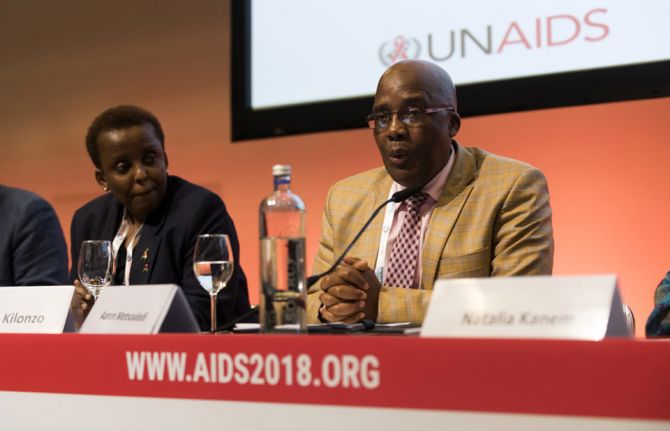
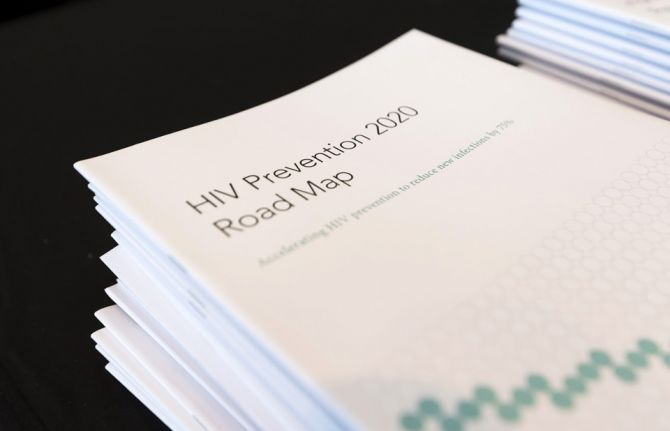
Feature Story
Global HIV Prevention Coalition implements the HIV Prevention 2020 Road Map
24 July 2018
24 July 2018 24 July 2018On 23 July, the Global HIV Prevention Coalition brought together HIV prevention leaders in Amsterdam, Netherlands, to discuss the urgency of scaling up HIV prevention services. They shared the progress made and looked at the challenges, including policy barriers and inadequate funding for prevention.
The speakers highlighted the initial progress made since the launch of the Global HIV Prevention Coalition in October 2017. National prevention coalitions engaging many sectors and civil society organizations have been established to better coordinate responses. Ambitious prevention programme targets have been set in many countries and newly launched HIV strategies focus on prevention.
However, the limited capacities of national programmes and a steady decline in prevention funding have put the end of AIDS at risk. Policies on age of consent in about half of all coalition countries remain major barriers to adolescents’ access to HIV and sexual and reproductive health services. Many countries lack sufficient data on key populations and hence reach few of them. Stigma and discrimination further prevent key populations from accessing services.
The heads of the Global Fund to Fight AIDS, Tuberculosis and Malaria (Global Fund) and the United States President’s Emergency Plan for AIDS Relief (PEPFAR) underlined the need for adequate investments focused on the people with the highest HIV prevention needs.
Alvaro Bermejo, the Director-General of the International Planned Parenthood Federation, made a passionate appeal to donors and programmes not to forget condoms. All young people and members of key populations need easy access, he said, which was why the current gap in condom programming has to be closed.
For prevention efforts to be sustainable, civil society should be meaningfully engaged in national coalitions and their expertise and comparative advantage in implementation used and linked to adequate funding.
Given these challenges and an ambitious prevention agenda to be implemented in only two and a half years, rapid action is required. The call made by the prevention leaders was a clear step in the right direction.
The participants of the event included the Minister of Health of South Africa, Aaron Motsoaledi, representatives of civil society and the heads of PEPFAR and the Global Fund. Michel Sidibé, the Executive Director of UNAIDS, and Natalia Kanem, the Executive Director of the United Nations Population Fund, convened the high-level panel.
Quotes
“The prevention coalition we launched together with the United Nations Population Fund has been able to create a momentum. We are seeing prevention back on national agendas, with amazing calls from the grass roots. What we need now is concrete action to scale up programmes.”
“The face of vulnerability is adolescent girls and key populations. We really do need to think about the era of sustainable development and what it means to live with full dignity. Prevention implies access to information, it implies timely respectful services and understanding that we are in a time of crisis.”
“An essential element is the question of accountability for HIV prevention and who is the duty-bearer, who should be accountable. The HIV Prevention Road Map has very clearly articulated the need for clear responsibility and it lies in the duty-bearer for the multisectorial response. Accountability in HIV prevention programming is essential to measure achievement against national and subnational prevention targets.”
“We need to put resources effectively into prevention for key populations. It is impossible to stop AIDS without stopping stigma, discrimination and criminalization of drug use and key populations.”
“There is a condom crisis inside the prevention crisis. We know how to deliver condoms. It is other things that are getting in the way of not having condoms where young people are, of not allowing young people under 18 to access condoms in the clinics, not allowing them to come near schools, of prosecuting women for carrying condoms. That is what we need to address.”

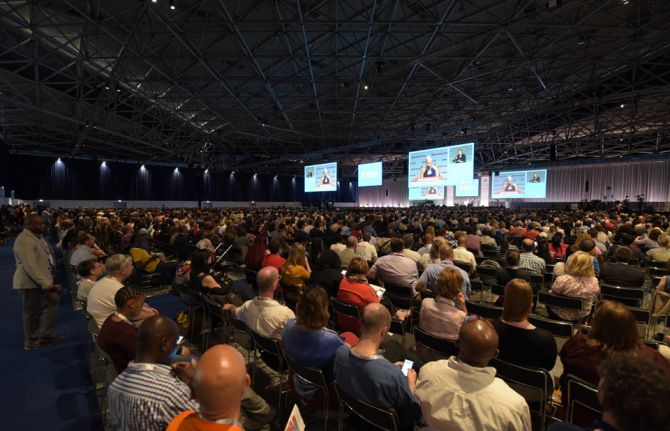
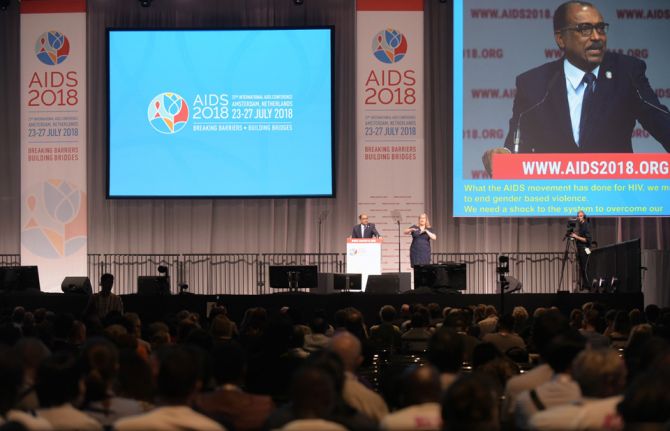
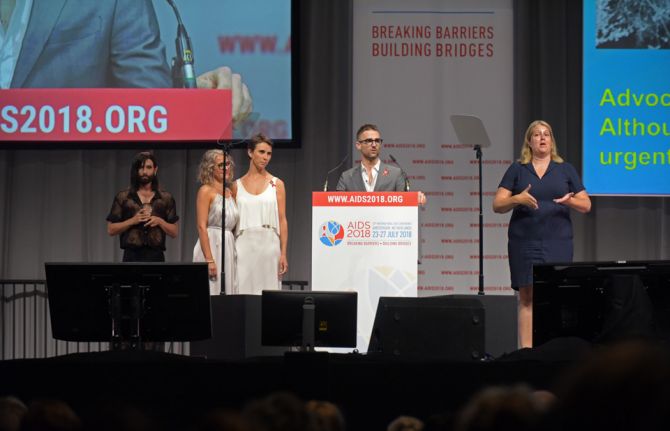
Feature Story
The 22nd International AIDS Conference opens in Amsterdam
24 July 2018
24 July 2018 24 July 2018The 22nd International AIDS Conference opened on 23 July in Amsterdam, Netherlands. Under the theme “Breaking barriers, building bridges”, the conference will draw attention to the need of rights-based approaches to more effectively reach key populations.
This year’s theme echoes one of the messages in UNAIDS’ latest report, Miles to go—that key populations are not being considered enough in HIV programming. Key populations and their sexual partners account for 47% of new HIV infections worldwide and 97% of new HIV infections in eastern Europe and central Asia, where one third of new HIV infections are among people who inject drugs.
The International AIDS Conference, which will run from 23 to 27 July, is the largest conference on any global health issue in the world and provides a unique forum for the intersection of science, advocacy and human rights. Bringing more than 15 000 participants together, the conference is an opportunity to strengthen policies and programmes that ensure an evidence-informed response to the epidemic.
The conference was officially opened by Princess Mabel van Oranje, the International AIDS Conference Chair, Linda-Gail Bekker, the UNAIDS Executive Director, Michel Sidibé, the Director-General of the World Health Organization, Tedros Adhanom Gebreheyesus, and artist and winner of the Eurovision Song Contest in 2014, Conchita Wurst.
Speaking at the opening ceremony, Mr Sidibé stressed that the pace of progress is not fast enough to meet the 2020 targets. He sounded the alarm on the growing inequalities and intolerance for diversity that are resulting in an HIV prevention crisis. He noted the need to break barriers that exclude people from their rights.
He also highlighted the need to close the gaps, specially the funding gap. “Like you, I worry about the funding gap. There is a persistent 20% gap between what is needed and what is available. We know small cuts can have big consequences. A fully funded AIDS response is non-negotiable,” said Mr Sidibé.
The conference is set to emphasize the need to promote human rights-based and evidence-informed HIV responses that are tailored to the needs of vulnerable communities, activate and galvanize political commitment and accountability among governments, donors, the private sector and civil society and address gaps in and highlight the critical role of HIV prevention.
During the coming days there will be opportunities for sharing knowledge, ideas and good practices through plenary discussions, abstract presentations, symposia, skills-building workshops, attendance at the Global Village community space and numerous independent events.
Related

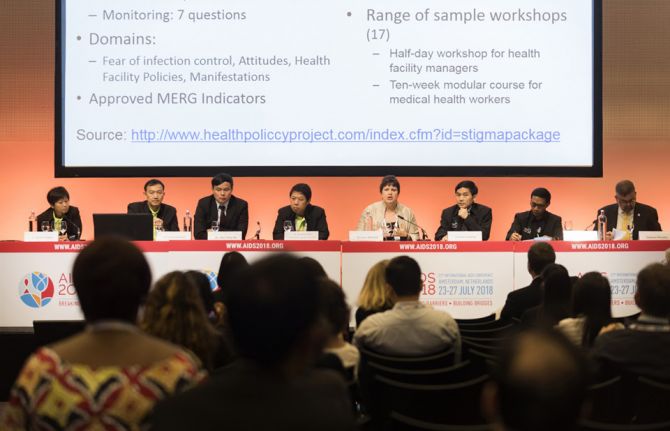
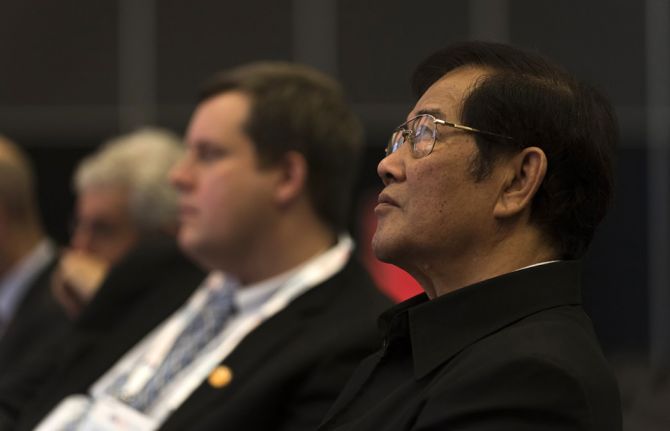
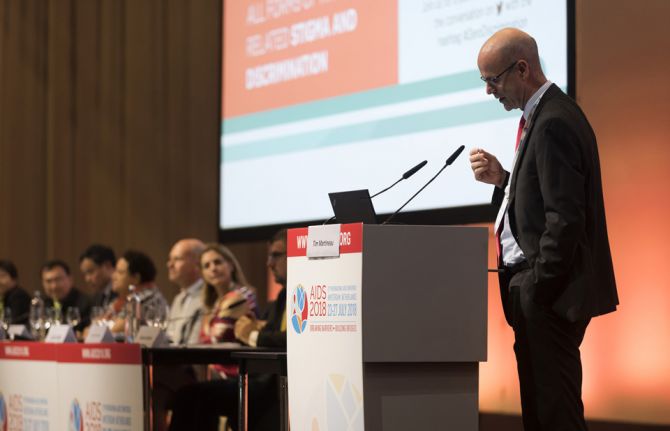
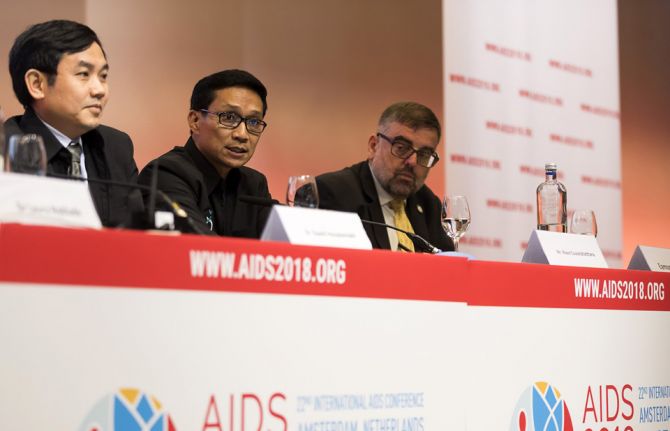
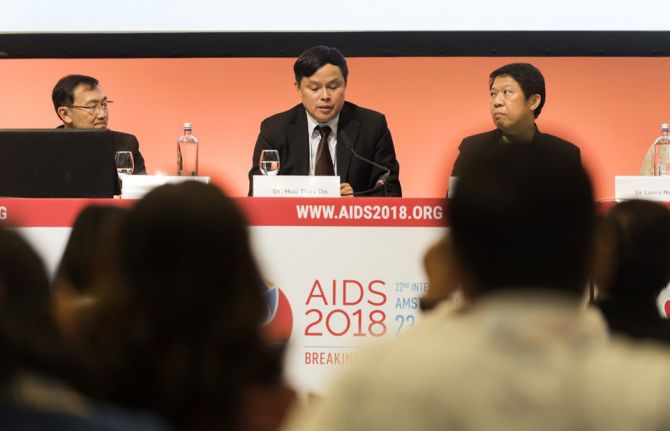
Feature Story
Catalysing zero discrimination in health-care settings in Thailand and Viet Nam
23 July 2018
23 July 2018 23 July 2018Stigma and discrimination in health-care settings is a major obstacle to ending AIDS. Widespread across the world, stigma and discrimination seriously reduces the quality of life of people who experience it and hinders their access to health and HIV services.
How to catalyse country initiatives and reduce stigma and discrimination in health-care facilities was the focus of a session at the International AIDS Conference on 23 July in Amsterdam, Netherlands. The session, Catalyzing Thailand and Regional Initiatives on Zero Discrimination in Healthcare Settings and Building Bridges Towards a Global Compact to Eliminate all Forms of HIV-Related Stigma and Discrimination, brought together representatives of the Governments of Thailand, Viet Nam and the Netherlands and representatives of regional civil society networks, the United States Centers for Disease Control and Prevention and UNAIDS.
Thailand is acknowledged as a pioneer in reducing stigma and discrimination in health-care settings in Asia through its innovative system-wide response. The event heard that the Thai stigma and discrimination reduction package is based on global measuring tools and contains a permanent monitoring system, evidence-informed actions at health facilities and community engagement at all levels.
Viet Nam piloted a stigma and discrimination reduction programme in Ho Chi Minh. At the session, Huu Thuy Do, Head of the Information, Education and Communication Department of the Viet Nam Administration for AIDS Control, explained how Viet Nam learned from cooperation with Thailand and how the Thai model was translated to the city level in Viet Nam.
Based on the experiences of Thailand and Viet Nam, speakers encouraged countries to foster cross-border links on stigma and discrimination reduction efforts in health-care settings in order to achieve more effective and efficient joint global action.
The participants also learned from the Dutch approach, which directs attention to the inequality of access to HIV prevention and treatment services while promoting an enabling legal environment to prevent stigma and discrimination.
The participants heard that the greater engagement of communities, people living with HIV and key populations in the development and monitoring of programmes against stigma and discrimination is a core element for successful stigma and discrimination reduction programmes. Their participation not only increases access by hard-to-reach communities, but also helps ensure that a rights-based approach is used.
The event concluded with the presentation of the Global Framework for Action, an initiative led by civil society that aims to catalyse and accelerate the implementation of commitments made to end HIV-related stigma and discrimination in different settings.
Quotes
“Thailand is a pioneer in the Asia region in developing a comprehensive programme to create health-care settings free from stigma and discrimination, leading to better health outcomes that go beyond HIV. In Thailand, we developed an intervention package that adapted global tools to our local context to stop stigma and discrimination. Stigma and discrimination is now systematically measured through surveys as part of that intervention package. The collected data are subsequently used to increase awareness, inform interventions and serve as a catalyst for system-wide actions.”
“What we should do is talk with religious leaders and talk with traditional leaders to make them see that discrimination and stigmatization is also a threat to society.”
“Discrimination at work links with health care. We find that people living with HIV all over the world face huge fears about disclosure, losing their jobs. Young people living with HIV have extremly high levels of unemployment.”
“Human rights, including stigma and discrimination and gender related vulnerabilities, are among the reasons for the serious HIV prevention gap and the insufficient progress that has been made in reducing new HIV infections in many regions of the world.”
"While HIV related stigma and discrimination are far from over, our experiences show that stigma and discrimination are both measurable and actionable. Reduction tools are available and when combined with collective leadership from key stakeholders and partners, we can end HIV related stigma through evidence based monitoring and effective interventions. Vision without action is just a dream but with action can make a difference. The world should unite to eradicate stigma and discrimination in all its forms."
"In the Thai model, the involvement of CSOs, PLHIV and KP’s goes beyond just an invitation to speak at a S&D reduction training. Communities are significantly involved in the entire process, from the programme consultation, planning over the implementation to the monitoring of progress."
Documents
The youth bulge and HIV
20 July 2018
In many sub-Saharan African countries, declines in child mortality combined with a slow decline in fertility have resulted in children and young adults comprising a large part of the overall population. This is known as the youth bulge. The youth bulge is not new. Younger generations have almost always been larger than the previous generation. However, before the twentieth century, high child mortality meant that a large proportion of children did not survive to adulthood.
Documents
UNAIDS data 2018
26 July 2018
This edition of UNAIDS data highlights these challenges and successes. It contains the very latest data on the world’s response to HIV, consolidating a small part of the huge volume of data collected, analysed and refined by UNAIDS over the years. The full data set of information for 1990 to 2017 is available on aidsinfo.unaids.org.
Documents
Miles to go—closing gaps, breaking barriers, righting injustices
13 August 2018
The global AIDS response is at a precarious point—partial success in saving lives and stopping new HIV infections is giving way to complacency. At the halfway point to the 2020 targets, the pace of progress is not matching the global ambition. This report is a wake-up call—action now can still put us back on course to reach the 2020 targets.

